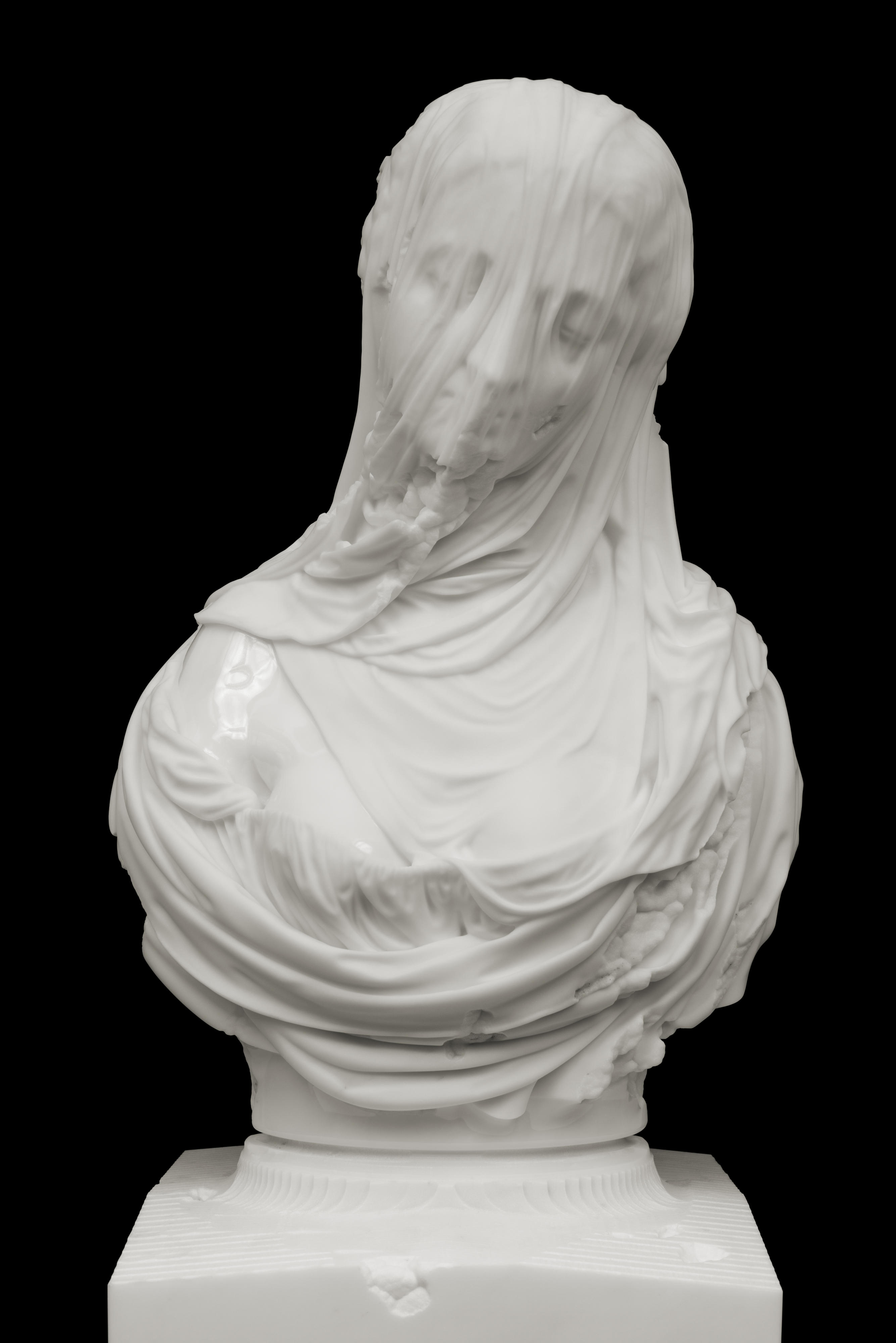Barry X Ball
b. 1955, Pasadena
Purity Defiled, after Antonio Corradini (1668–1752), La Purità, 1720–25
2008–23
Sculpture: White Carrara 'Michelangelo' Statuario marble
Pedestal: wood, acrylic lacquer, steel, nylon, and plastic
Overall: 179.2 x 42.2 x 30.5 cm (70 5/8 x 16 5/8 x 12 in.)
Sculpture: 72.5 x 42.2 x 30.5 cm (28 5/8 x 16 5/8 x 12 in.)
Pedestal: 106.7 x 35.6 x 30.5 cm (42 x 14 x 12 in.)
Provenance
Description
‘There is a long history of artists making working in that ancient tradition. Fueled by love, I'm reaching way back to a time centuries before the Modernist Revolution, searching for a way to make something equally revolutionary.’—Barry X Ball
Barry X Ball was born in Pasadena, California, in 1955. As a college student, his travels to Europe exposed him to the works of the Old Masters who inspire many of the works he creates today. Ball reinvents works of the Renaissance. Using modern technological methods, he unites the art historical with the present day, revitalising masterpieces of the past.
In creating his works, Ball’s process begins with a three-dimensional scan of an existing sculpture. Computer-aided modelling software is applied to alter the scan according to the artist’s vision. Milling machinery is then used to sculpt the stone. However, his process is not entirely reliant upon technology, as the sculptures often require detailed and meticulous work and refinement by hand.
Purity Defiled, after Antonio Corradini (1668–1752), La Purità, 1720 – 1725, Ca' Rezzonico, Venice, 2008–2023, is inspired by the titular sculpture by Corradini. The present work, initially appearing almost an exact counterpart of the original, is a contemporary reimagining of the 18th-century work, both in form and in subject. While Corradini’s work today appears with minor abrasions and damage imparted by the passage of time, Ball’s Purity Defiled presents a figure that is partially disfigured, her marble form scarred despite the durability of the material. The smooth finish of the stone’s surface stands in stark contrast to the studied desecration of the subject’s cheek, her throat, her breast.
Ball has explained that the ‘wounds’ first occurred during the computerised milling process, when the machine suddenly and inexplicably awry and ‘chewed away the stone in several passages’. For many years, the work was deemed ‘ruined’ and sat in the corner of the artist’s studio, a brutal reminder of the risks and unpredictability of his working method. However, in 2022, Ball began to reconsider the blemished sculpture and decided to ‘enhance’ the damaged sections by hand, creating an alternate vision, an altered state of perfection.
The finished form of Purity Defiled can be interpreted in many ways, the perfected imperfections evoking the fissures of natural stone, and the layers of geological rock formations, as well as suggesting martyrs’ wounds or violence against the female figure. Her veiled form still appears sensuous and mysterious, the poignance of the work only augmented by the inherent violence of her defilement.




